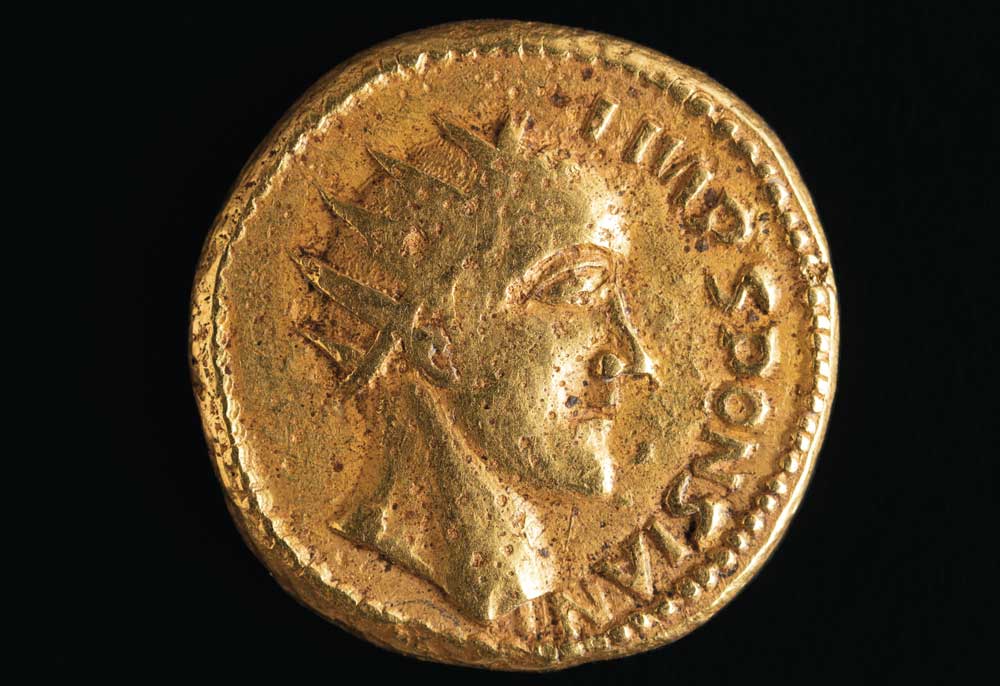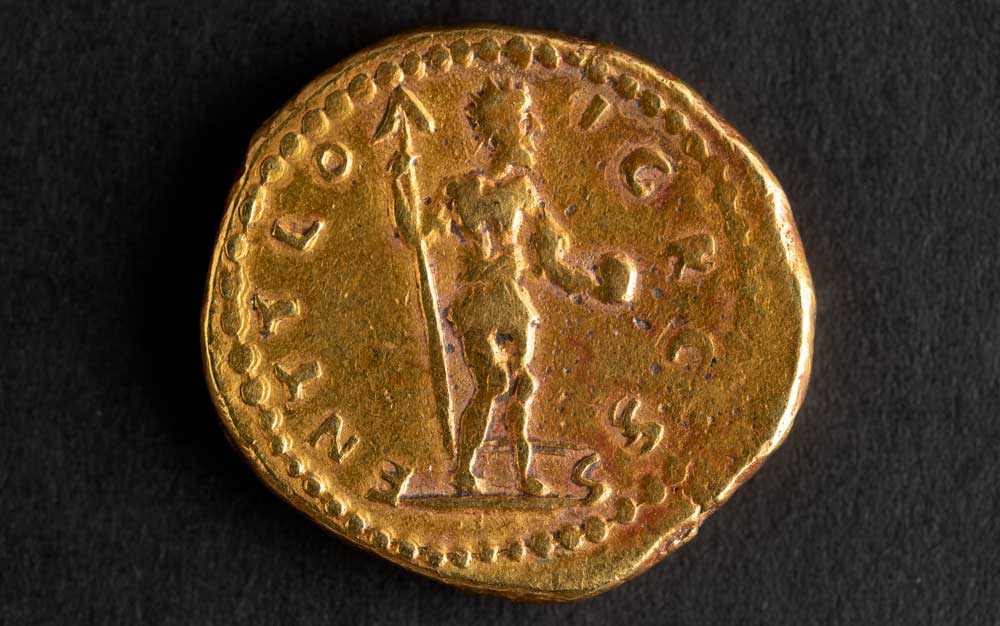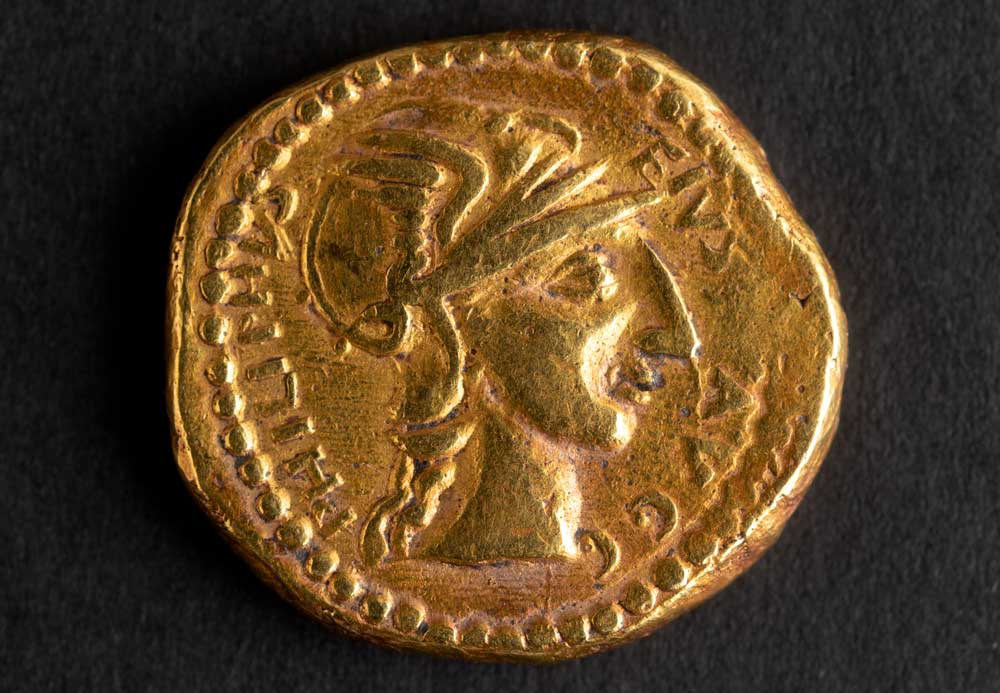The ‘Lost’ Emperor? | History Today - 11 minutes read

Carl Gustav Heraeus was not the sort of man who got excited easily. A stiff Swedish-born scholar, he had risen from humble beginnings to become Inspector of Medals for the imperial collection in Vienna, and was known for his careful, even pedantic, attention to detail. Yet when, in March 1713, a set of eight gold and silver coins landed on his desk, even he cannot have suppressed a gasp. According to his notes, they had recently been discovered in Transylvania. Exactly where, Heraeus could not say, but they had been purchased from the court councillor, Johann David von Palm, and seem to have belonged to a larger hoard which had since been dispersed.
Most of Heraeus’ coins were fairly unremarkable. Besides a stater of Alexander the Great and a Roman denarius from 47 BC, there were a couple from the emperor Philip I (r.244-49) or II (r.248-49) and one of Gordian III (r.238-44) – all of rather mediocre quality. But the last two were nothing short of extraordinary. Though the lettering was crude, Heraeus could clearly make out the name ‘Sponsian’ – a Roman emperor previously unknown to history.
Of course, Heraeus knew the coins’ craftsmanship left a lot to be desired. They were nothing like the quality he was used to. In some respects, they were downright strange. Whereas most Roman coins were minted, these had been cast by pouring molten metal into a mould – a much slower and more inefficient process. But this didn’t trouble Heraeus too much. In his view, the Sponsian coins likely belonged to a class of makeshift currency, known as ‘barbarous radiates’. During the third century, when the Roman Empire was rocked by instability, rival claimants to the imperial throne sometimes had to manufacture coins on the hop simply to pay their troops, and often relied on inexperienced local metalworkers. If the Sponsian coins were indeed ‘barbarous radiates’, Heraeus believed, this would explain why they were in such bad shape. Most importantly, it would also help validate Sponsian’s own status as a ‘forgotten’ emperor.
Ridiculous modern coins
Not everyone was convinced. In 1868, the French numismatist Henry Cohen began to have his doubts. The curator of the Cabinet des médailles at the Bibliothèque nationale de France, he was a noted authority on Roman coins. He felt that the quality of the Sponsian coins was simply too poor to be credible. In his opinion, they were not genuine pieces but ‘ridiculously imagined modern coins’ – and ‘very badly made’ at that.
Forgery was certainly not unknown. Since at least the 16th century, over-eager antiquarians and money-grubbing crooks alike had been making ‘ancient’ coins for either pleasure or profit. Some were more convincing than others, but all were inspired by genuine examples and often reproduced some of the same motifs. Perhaps the most famous examples were made by Giovanni Cavino (1500-70), who struck a collection of highly impressive coins and medallions, apparently merely to show off his talent for imitating classical works.
If the Sponsian coins were counterfeits, this meant that Sponsian himself was probably a fake, too.
Would-be emperor
For more than 150 years, Heraeus’ coins were consigned to footnotes. But in November 2022, that changed. As it turns out, these were not the only coins bearing Sponsian’s name. Among von Palm’s larger hoard there had been several more examples. These were sold in dribs and drabs to collectors across Europe. Over time, a few got lost. But two survived. One ended up in the Brukenthal Museum in Sibiu, Romania. The other was bought by William Hunter, a Scottish physician with a passion for collecting antiquities. He later bequeathed it and three other coins from the von Palm hoard to the University of Glasgow, along with the rest of his collection. It was there that it caught the eye of Paul N. Pearson, a professor of earth sciences at University College London.
While researching a book about Roman history, Pearson chanced upon a reference to the Sponsian coins and contacted Jesper Ericsson, the Curator of Numismatics at the Hunterian Museum and Art Gallery in Glasgow. Suspecting that there was more to the story than either Heraeus or his critics had realised, they decided to conduct a complete scientific analysis of the coins in the von Palm hoard.

Together with three colleagues at the University of Glasgow – Michela Botticelli, Jacek Olender and Liene Spruženiece – Pearson and Ericsson used microscopes and spectroscopy to examine the surface of the four coins in the Hunterian collection. What they found was remarkable. Microscopic abrasions on the surface of the Sponsian coin were consistent with the patterns seen on genuine coins and contained mineral deposits reflective of a long period underground. As Pearson’s team argued in a paper published in PLOS ONE, this suggested not only that it had experienced wear and tear during circulation but that it had once been buried, too. Pearson’s team also found that the amount of gold required to produce the ‘Sponsian assemblage’ was high. It would have cost the equivalent of £16,700 – a huge sum for a typical early-modern forger to risk. Taken together, this seemed to prove that the Sponsian coin was authentic – and that Sponsian had been a real emperor.
That wasn’t all. In his book, The Roman Empire in Crisis, 248-260, Pearson offered some thoughts about Sponsian’s ‘empire’. Since the Sponsian coins in von Palm’s hoard had been found in Transylvania, alongside others from the reigns of Gordian III and Philip I/II, Pearson speculated that Sponsian may have been an opportunistic general who tried to carve out a state for himself in Dacia after the death of Philip I/II in 249 – or, less plausibly, during the sole rule of Gallienus (260-68), which witnessed numerous revolts.
All this makes a certain amount of sense. Given how chaotic the third century was, it wouldn’t be that surprising if a would-be emperor like ‘Sponsian’ had flourished briefly on the fringes of the Empire, before disappearing without leaving any trace beyond a few odd-looking coins. He certainly wouldn’t have been unique. As Alfred Deahl has pointed out, at least one other previously ‘lost’ emperor fits the same pattern. Domitian II – who probably ruled northern Gaul for a few weeks around 271 – was so fleeting a figure that his reign, too, is known only from numismatic evidence. And even that was questioned for a time. In 1900 a coin bearing his name was found in a field in France. As with Sponsian, many dismissed this as a fake – until, in 2003, another turned up in Oxfordshire and, three years later, a third appeared in Bulgaria.
Heads and tales
Yet while the results of Pearson’s scientific analysis are impressive, there is still good reason to be sceptical both about the authenticity of the Sponsian coins and about his existence altogether.
First, there’s the portrait. Although it was quite common for third-century emperors (and usurpers) to be shown with a ‘radiate’ crown, the style is strange. Not only are the features simplistic, almost to the point of absurdity, but the fact that it is a head, rather than a bust, is unusual. By the death of Alexander Severus in 235, it had become customary for portraits to include a few folds of the toga at the base of the neck – and it’s hard to see why the Sponsian coins should have broken with this.
Then there’s the inscription. That it only goes part of the way around the head is unusual in itself. But more important still is what it says. The text reads: ‘IMP. SPONSIANI’. There is an obvious problem with this. ‘SPONSIANI’ is in the genitive case (‘of Sponsian’) rather than the nominative. Granted, this might not have been deliberate. As Alice Sharpless has pointed out in an article for the American Numismatic Society, the final ‘I’ could have been produced if the mould had slipped while being cast, causing part of the ‘N’ to be impressed twice. But it is difficult to believe that so clean a portion of a letter could be duplicated by accident, especially without encroaching on the portrait head.
The reverse is even more troubling. This has been copied directly from a Republican denarius of Caius Minucius Augurinus, in 135 BC, showing the column erected in memory of his ancestor, Lucius, who, as praefectus annonae in 439 BC, had secured the distribution of grain and thwarted a potential coup. To explain this, Pearson suggests that the letters ‘C. AUG.’ (= Caius Augurinus) at the top may have been misconstrued as meaning ‘Caesar Augustus’ and that the design was hence reproduced to associate them with Sponsian – but this is fanciful speculation. There is no reason why any emperor would plagiarise so obscure a coin from 400 years before – and no precedent for so haphazard a combination of imagery.

Finally, there is the scientific evidence. That the surface is covered with scratches is beyond dispute. But it’s not at all clear that these really were caused during circulation. Although they do resemble some of the damage seen on genuine coins, there is so little research done on this topic that Pearson’s team had to compare the Glasgow Sponsian against 19th-century French francs which had been in circulation for as much as 100 years – hardly a close parallel. And though the mineral deposits do suggest that the von Palm hoard spent a long time underground, there is nothing to say that the Sponsian coin was buried in antiquity.
There are other questions. If the Sponsian coin is genuine, why was it found with such a strange selection of other coins? How did third-century Roman coins get jumbled up with a stater of Alexander the Great and a Republican denarius, in Dacia, of all places?
Seeing is believing?
It seems vastly more likely that the Sponsian coins were made by early modern forgers than Roman metalworkers. But why did someone spend so much time and money producing something so amateurish? The obvious answer is that they were, as Mary Beard has put it, ‘very inefficient’. It’s certainly not unknown: the German forger Konrad Kujau was so inept that he managed to get Adolf Hitler’s initials wrong on the cover of the Führer’s supposed diaries. But this is perhaps too easy an answer. Another, more intriguing, possibility is that the coins’ awkwardness was part of the artifice. If the forger wanted us to believe Sponsian really could have existed, they had to make it plausible. The first step was to choose a suitable timeframe and context – an outlying province in a time of chaos, where a ‘lost’ emperor might easily lie hidden. Then, the forger had to make the coin match our expectations. Something too clever could have looked suspicious. But an amateurish hodgepodge might just about pass muster. What usurper has time to produce masterpieces when fighting to seize the throne, after all? Provided it did not seem too implausible, its artlessness would reflect the perceived instability of the age and add to its plausibility. Playing off our preconceptions, the coin would make us complicit in its own deceit. In other words, we would see what we want to see.
Needless to say, we can’t be sure if this is what the forger really intended. But the fact that we are still debating Sponsian’s existence after more than 300 years is revealing. With ancient coins, just as with modern politics, sophistication is not always needed to seem authentic. Sometimes, the art of deceit lies in artlessness – and the clumsiest fantasies are the most seductive.
Alexander Lee is a fellow in the Centre for the Study of the Renaissance at the University of Warwick. His latest book, Machiavelli: His Life and Times, is now available in paperback.
Source: History Today Feed